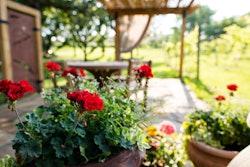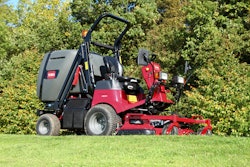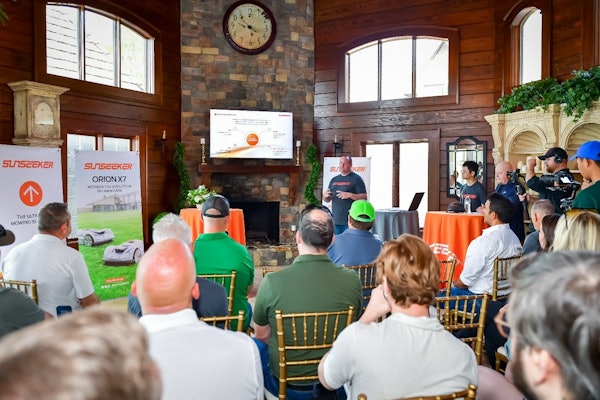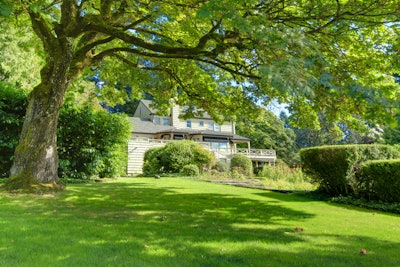
While it’s true that certified arborists will know more details about the ins and outs of proper tree care, there are a few pieces of advice they recommend to professional landscapers that can help improve the overall health and well-being of the trees you tend to.
Take a look at what certified arborists recommend keeping in mind before diving into a tree care project.
Less is more
Pete Smith, urban forestry program manager with the Arbor Day Foundation, defines “tree care” as the aspects of establishing and tending the most valuable part of a home’s landscape: the trees.
When working with trees in a landscape, Smith says it really starts before the tree comes into contact with the space. As the green industry professional, it’s up to you to examine the area beforehand if possible and know where these trees need to be planted to ensure they achieve their maximum growth potential.
The idea, Smith says, is to find the balance between the long-lived landscape with the long-lived organism (tree).
In his time working in the green industry, Smith says he’s seen time and time again that small mistakes in tree care can have major impacts down the line, and he urges landscapers to do their research before putting something into practice.
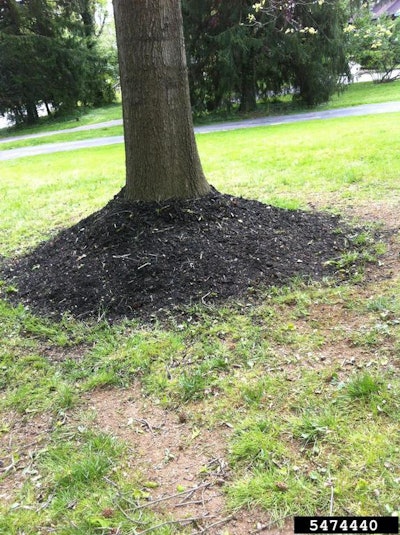 Photo: Stephen Curry, Lower Merion Twp., Bugwood.org.
Photo: Stephen Curry, Lower Merion Twp., Bugwood.org.“Landscapers are people who want to do right by their clients; they want to deliver a whole package of landscape management for those clients but they may not have the more detailed skills of a certified arborist,” says Smith.
If this is the case for your landscaping company, Smith says it shouldn’t keep you from performing your project. When in doubt, Smith says the best approach to tree care is to keep in mind that less is more.
Oftentimes, Smith says the temptation can be to try and give trees too much of a good thing, whether it be mulch, fertilizer, pruning or water. Trees need all of these things to grow and thrive, but too much of them can ultimately hurt and hinder the tree.
“Some of the sins we see as arborists in tree care is often too much of something,” says Smith. “There is too much mulch applied around the trunks of trees. There’s just too much of it piled around the trunk like a volcano. Do less of that.”
Another major concern Smith has seen over the years is too much pruning taking place, especially on older trees. Too many times, he says he’s seen trees being pruned to fit a certain style, even though that style might not be beneficial for the tree in the long run.
For older trees, the practice of lion tailing is, in his opinion, the second worst practice you could do to an adult tree. The first, he says, is topping.
The last huge issue Smith has noticed when it comes to tree care is that there is often too much activity or lawn care taking place around the trunks and roots of the trees.
“We need to avoid that zone and damage to that zone with our tools,” says Smith. “That area is critical to the long life of a tree. We can really slow down the growth of those young trees, no matter how much fertilizer you’re putting down. One ding from a weed eater can set that tree back a year.”
Poor tree care, best time to tend to trees
The everyday environmental stresses trees go through aren’t really within your power to control, as weather, pests and diseases can come out of nowhere and wreak havoc, but what can be controlled is the part you play in tending to the tree.
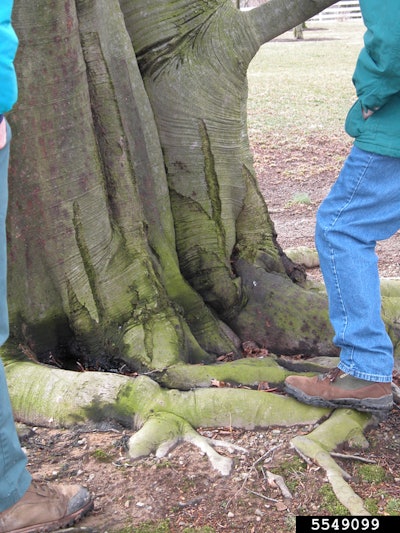 Photo: Penn State Department of Plant Pathology & Environmental Microbiology Archives, Penn State University, Bugwood.org.
Photo: Penn State Department of Plant Pathology & Environmental Microbiology Archives, Penn State University, Bugwood.org.From a human standpoint, Smith says the one thing we can try to do for the trees is give them space. He recommends thinking of the tree as more than just the trunk and branches and instead to look at them as root systems with a part we can see above ground.
“It’s the roots that are often ignored and abused, and that abuse comes in the form of lawn irrigation systems, trenching around trees and cutting too many roots, new construction and heavy equipment around trees,” he says. “These are all threats. And while we may be protecting the trunk and the branches, what we get most often are customers calling arborists three years after they put in a swimming pool asking what’s wrong with my tree?”
This, he says, is due to a lack of understanding and planning around the roots.
Since we are still enjoying winter, Smith says now is the best time to take stock of the trees you’ll be tending to, as well as what will need to be done to them in the coming months.
Smith recommends examining all trees on your customers’ landscapes to see what kind of pruning they will need, as well as if there are any issues that dense leaves might have been covering up.
“The one thing that a good landscaper can bring to their client is the knowledge of what species are on the property, and trees are a big part of that because everything associated with that species is going to be linked to what we know about the species’ performance,” he says.
Smith says this is also a good time to talk to customers about any concerns they might have about their trees.
Building relationships, learning more
Smith believes that any landscaper that views him/herself as a professional should take advantage of any type of tree care courses offered, as it not only broadens his/her knowledge base, but it can also set him/her apart from the rival landscaping companies that don’t have tree care certifications.
“Tree care should be part of what you’re attempting to deliver for clients; it can be one of the things that distinguishes you from (just) a lawn mowing company,” he says. “Those skills, when applied correctly, can be a very valuable addition to a portfolio you’re delivering to a client.”
When possible, Smith recommends always trying to use a certified arborist in tree care situations. To make this a reality, he says landscapers should find a go-to arborist or two in their area that can serve as their pinch hitter, so to speak. Always having these certified tree experts in your back pocket can help give customers the accurate and safe practices they need for their trees.
Along with finding the top arborists in your area, Smith recommends going to arborist meetings, training sessions and classes that give you the chance to introduce yourself to the groups and explain that you’re wanting to develop a partnership.
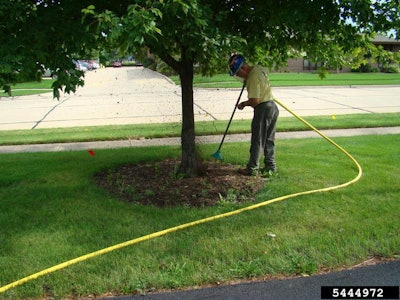 Photo: Luana Vargas, Desert Botanical Garden, Bugwood.org.
Photo: Luana Vargas, Desert Botanical Garden, Bugwood.org.Smith says at the end of the day, establishing these partnerships not only helps the client, but it also helps your business and the welfare of the trees.
“(Arborists) know you’ve got questions; we’ve got answers,” he says. “Your tree questions are our business, and we know you’re on the front lines of dealing with these trees on a daily basis. We’re here to support you with your client. We’re not trying to take your client. We want to support you and improve tree care in the community.”
His final advice is to always make your landscaping practices your own based on your education and industry knowledge and not just based on what you’ve seen others do. This, he says, could help keep issues like mulch volcanoes from continually making an appearance.
“Use trees and tree care as a differentiator in your business,” he says. “Don’t try to keep up with the Joneses. Really understand what it is you’re doing for the plants and the landscapes you’re tending. You’re a caretaker. You have a responsibility both to the client and also to the land, and there are lots of things that (landscapers) can do better. Mostly, it’s doing less and letting the land work with you instead of constantly battling against nature. It isn’t a battle against nature.”


